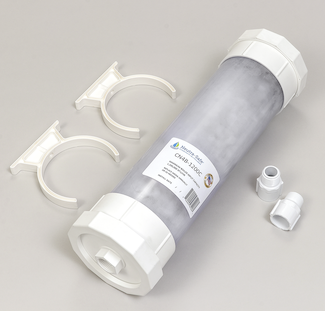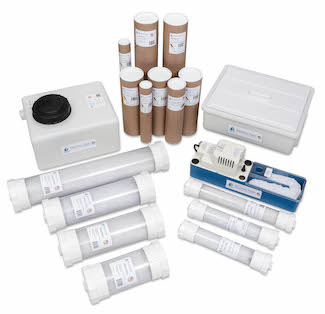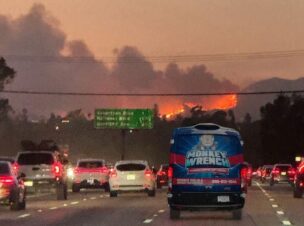 A highly efficient, environmentally friendly and safe system should be the outcome of all condensing appliance installations. The system is made up of many components and all must work together to achieve the goal of providing the end user with the best possible system. A high efficiency condensing appliance by itself does not mean a highly efficient, environmentally friendly and safe system. The boiler, water heater or furnace must be installed as per manufacturer’s instructions then combustion performance must be tested, and controls properly set for that application. The system, which the appliance is connected to, must also be designed and installed properly. This may consist of proper pipe sizing, pump sizing, duct sizing and other considerations.
A highly efficient, environmentally friendly and safe system should be the outcome of all condensing appliance installations. The system is made up of many components and all must work together to achieve the goal of providing the end user with the best possible system. A high efficiency condensing appliance by itself does not mean a highly efficient, environmentally friendly and safe system. The boiler, water heater or furnace must be installed as per manufacturer’s instructions then combustion performance must be tested, and controls properly set for that application. The system, which the appliance is connected to, must also be designed and installed properly. This may consist of proper pipe sizing, pump sizing, duct sizing and other considerations.
 All condensing appliances produce condensate. A condensing appliance operating in full condensing mode will produce up to one gallon per hour for every 100,000 BTU/hour of input. This can total over 2,000 gallons of condensate in a heating season. Even more if there is a condensing water heater. This condensate is acidic and will have a pH of somewhere between 1.8 and 4.5. Any condensate below 5 to 5.5 can and will cause damage if not treated before disposal. The actual pH of the condensate from the appliance is dependent on several factors including but not limited to chemical makeup of the gas, proper adjustment of the combustion process and any contaminants in the combustion air.
All condensing appliances produce condensate. A condensing appliance operating in full condensing mode will produce up to one gallon per hour for every 100,000 BTU/hour of input. This can total over 2,000 gallons of condensate in a heating season. Even more if there is a condensing water heater. This condensate is acidic and will have a pH of somewhere between 1.8 and 4.5. Any condensate below 5 to 5.5 can and will cause damage if not treated before disposal. The actual pH of the condensate from the appliance is dependent on several factors including but not limited to chemical makeup of the gas, proper adjustment of the combustion process and any contaminants in the combustion air.
 When condensing boilers and furnaces were first introduced, they were oftentimes replacing old cast iron boilers and atmospheric furnaces that were vented into a chimney. Because the new appliance was direct vented, the old gas fired water heater with the 3” vent was now venting into an 8” plus masonry chimney. And we all know what happened then! That’s right, it rained inside of that chimney. The resulting condensate ate away the mortar, the bricks and the metal vent itself. So new codes were put in place to govern proper chimney venting to prevent damage from acidic condensate. The same acidic condensate that we make with condensing appliances by the way. And what happens?
When condensing boilers and furnaces were first introduced, they were oftentimes replacing old cast iron boilers and atmospheric furnaces that were vented into a chimney. Because the new appliance was direct vented, the old gas fired water heater with the 3” vent was now venting into an 8” plus masonry chimney. And we all know what happened then! That’s right, it rained inside of that chimney. The resulting condensate ate away the mortar, the bricks and the metal vent itself. So new codes were put in place to govern proper chimney venting to prevent damage from acidic condensate. The same acidic condensate that we make with condensing appliances by the way. And what happens?
Non treated condensate will damage and destroy cast iron, galvanized, copper and other types of metallic piping. If it is going into your septic system, then you run the risk of destroying the bacterial environment which is crucial to a properly operating septic system. If you are disposing of it into a public sewer system, then it is contributing to the potential damage and higher maintenance costs to that system including piping and the treatment facilities. If you are disposing of it directly to the ground it will kill plant life in the general area and put acidic liquid into the ground water.
Treating this condensate with a quality condensate neutralizer is an easy and effective way to avoid the above issues. A neutralizer should contain a proven high-quality media to provide effective neutralization. The media should consist of calcium carbonate and magnesium oxide. Marble chips from the big box store are not the answer. These marble chips work for a very short period. The reason for this is that while marble does contain some calcium carbonate, it is also made up of many other minerals which make it harder thereby reducing its neutralizing capacity. You should be able to easily visually inspect the neutralizer to determine if it needs recharging. The neutralizer should be easy to recharge. Most neutralizers should be recharged annually when the appliance receives its annual preventive maintenance service.
Let’s make this necessary accessory a part of every condensing appliance system.
Mike Bernasconi is VP, Technical Operations, Neutrasafe Corporation. For more info, www.neutrasafe.com.



